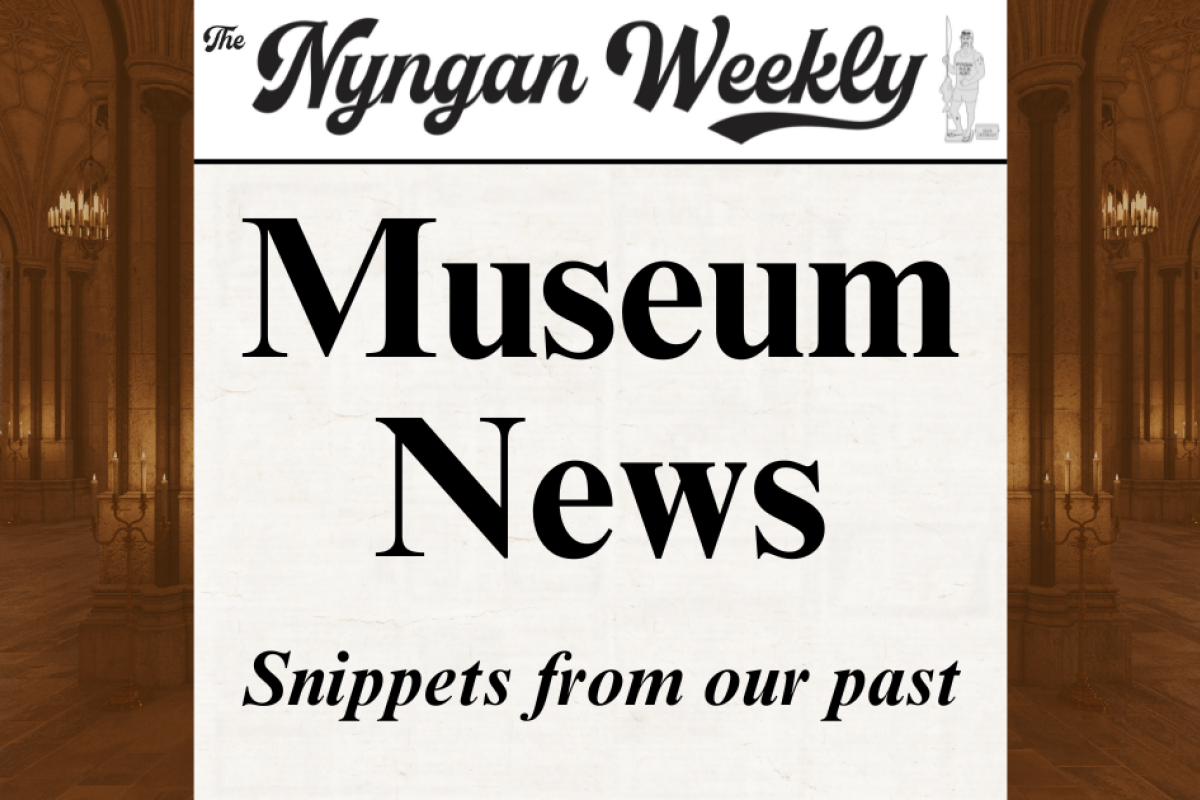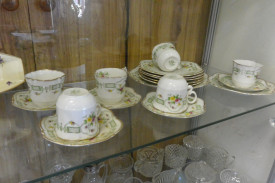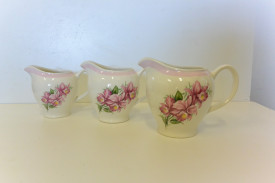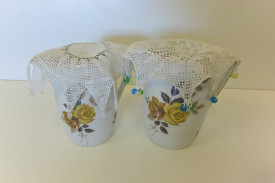General News
19 March, 2025
Museum News: Snippets from our Past
Leonie writes about her historical insight into the design and significance of tea sets.

By Leonie Montgomery, museum coordinator
What a lovely morning was had by all on Saturday, March 8, on the platform at the railway station. Thank you to the wonderful cooks for providing the delicious fair and to those women and men who joined us to celebrate International Women’s Day.
Of course, the Sneak Peek was a little cream jug. It is interesting how the size of the milk jugs and cream jugs compared to the volume of the containers we use now. Donna supplied a lovely china milk jug for Saturday morning, which added a little bit of old-time charm, as we dangled our modern tea bags and or stirred our sachets of cappuccino.
The cream for dolloping on the exquisite scones was also presented in a little cream jug.
We have a few different milk and cream jugs on display at the museum, as they were part of everyday life in every household.
The creamer featured is from a set that was owned specifically for serving morning or afternoon tea, or maybe supper. The set consists of six cups and saucers, matching small plates, a cake serving plate and the little jug.
More than likely there would be a matching sugar bowl at one time.
This particular tea set belonged to Amy and Vic Cain. Vic Cain had an orchestra in Nyngan in the 1950s.
I wrote an article in October of 2018 about the orchestra, which included Mrs O’Neill who played the violin.
Mage Cain, Vic’s sister, whose married name is Ford played the piano. Vic Cain and Frank Arnodon played the saxophone.
For the 1952 Railway Ball, Boyce Grodo, from Sydney, was included in the lineup with his trumpet and Snow Atkinson set the beat on the drums.
The Cain tea set has a crown printed on the base of each piece with the writing ‘Melba China England’.
According to ‘The Potteries’, the name ‘Melba’ was used by four different pottery firms over the years.
The style of logo shows that this tea set was made by Mayer and Sherratt, who operated from 1906 to 1941.
This particular mark was used from around 1921.
It has survived the years very well with only one saucer missing from the set. The tea set has a delicate scalloped gilt edge and the design is mostly green.
Each item in the set has the pattern number ‘1812’ hand painted on the base. Jugs came in all shapes and sizes, with and without the full morning tea requirements and the larger ones often occurred in sets of three.
On display at the museum is a lovely ‘Woods and Sons England’, graduated set of porcelain jugs dating from the late 1950s.
This set features a pink daffodil style flower and a pink line around the top.
I haven’t measured the jugs, but they appear to be around the one cup, two cup and then three cup size. This set of jugs were donated to the Museum at the start, back in the 1990s, by Glad Eldridge.
Another major contributor of our homeware is Val Hartwig, who donated a larger set of jugs.
These have a gilt edge and feature yellow roses. The jugs were made by ‘Myotts’.
The trademark on the base has “Myott’s China=Lyke Ware Staffordshire England”. But what is ‘China Lyke’? An advertisement in ‘The Pottery Gazette Reference Book 1960’ reads, “Myott Son & Co. Ltd. Manufacturers of Staffordshire Earthenware in the most extensive range of patterns at all prices. Also manufacturers of the now famous ‘China-Lyke’ Ware in the classic shape which in appearance is indistinguishable from china.” The company ‘Hoarde Vintage’ produced a blog “A Guide to Staffordshire Pottery”. From this I discovered that Staffordshire pottery was made in the English county of Staffordshire from the 17th century on.
There are three types of pottery produced, earthenware, stoneware and porcelain.
Earthenware isn’t fired to the point of turning glassy, so tends to be more porous and coarser than either stoneware or porcelain.
I did not find anything more about the China Lyke production, but I guess they found a way to make the earthenware more like China without the extensive firing, which would result in a cheaper product.
I have to admit, the finish on these jugs doesn’t seem very different to the other china ones.
Having and open jug on the table would be very attractive to flies and insects, so a common practice was to place a little crocheted doily on the top of the jug.
Little beads of shells were added to weight the edge so it did not slip into the jug.
One of the best things about our museum, is when you hear visitors comment: “I had one or grandma had one just like that!”
When you feel a personal connection with the exhibit, you have a more meaningful experience, which is demonstrated by the numerous wonderful comments left in our visitor’s book.
Read More: Nyngan


